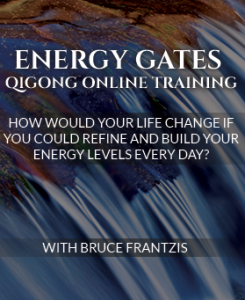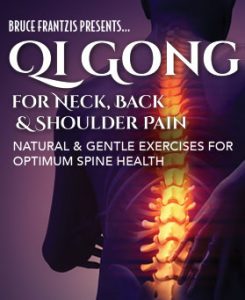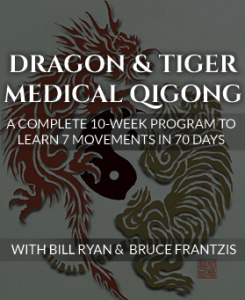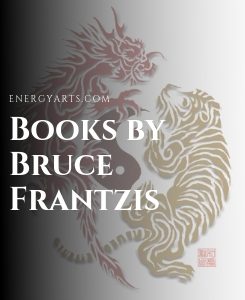I was recently in New Zealand and wanted to share some of my experiences while traveling. New Zealand is a beautiful country, one that I have wanted to travel to for a long time.
In this blog I talk about the qi glowworms, the Maori festival, Kauri trees and the Qigong Tui Na workshop I held in Auckland.
The Qi of Glowworms
We arrived in New Zealand and one of the first places we visited was Waitomo. Waitomo is known for a few things one of which are caves with glow worms.
When you are inside the caves you look up to see hundreds of worms that glow, brighter than the night sky. It is like looking at the stars of the galaxies. This is really a rather incredible sight.
These worms exist by having a string that is about a few inches long. The string is composed of little tiny dots or silver looking beads. These dots look like what in Tibet they would call a Vajra chain. These worms hang down from the roofs and if any fly or insect comes up the strings catch the food. They are essentially glow worm fishing lines.
The nature of the surrounding area is volcanic and earthquakes have created the caves with water flowing through. All kinds of insects and other things go into the caves for the water thus providing food for the worms. When the cave is dark these glowworms emit an incredible green or blue light. It is a very surreal sight.
You get to the worms by riding a boat. The light from the worms reflects off of the water. In many fantasy movies where you see spirits in the water, it has the same effect. The other interesting things is they exist in clusters that are dense. Trying to describe it is beyond my ability.
I was asked to tap into the qi of these glowworms. I tapped in and I found they were all connected in consciousness. Glowworms are also cannibals. What occurs is that each gets their own patch. If one gets too close, then the other one eats it. So, they are a very interesting species.
The mature glow worms have a lousy sex life. After creating the strings for about 8 months the larval glow worms build cocoons and hatch into a small mosquito like flies. These mature flies have three days to procreate within, three days and then they die. They also hatch with no mouth. Their whole existence is to starve, have sex and then die and be eaten.
I like to practice in different places and in the caves I did a bit of Yang Style Tai Chi as I have been practicing my old forms a bit.
After the caves we took a trip to some other caves with a local Maori guide.
These caves had a lot of qi. My life long experience has been that most large caves have a lot of qi, which is why many Taoist and Indian practitioners would position themselves inside the caves to do meditation. In India I lived in a cave for about 8 months.
Anyway, the bigger thing is that there were many rocks with ledges. The ledges came from the way the rain eroded the rocks. This whole area was at one time below the ocean water. It was very interesting because as we went further it looked just like Indiana Jones and the Temple of Doom.
One place we came down where there were water pools. You could see the ways rock were forming like statues. There were dozens that looked like mythical and animal creatures. It was just fascinating how these naturally formed.
On the Road to Rotaroa
As we left Waitomo on the way to Rotorua, the country looks a little like Northern California driving through Sonoma and Napa County, probably the way California looked 40 years ago, with no houses. Makes you remember what California was like before the population boom.
There are an insane amount of sheep and cows. We went through Taupo and saw some nice waterfalls, but they were more like rapids in a river.
Most people see New Zealand by driving it. There are lots of Camper Vans with people traveling across the country. We did a hybrid trip where we would fly into a main hub city and then make excursions from there.
The Maori Meeting and Sharing of Qi
In Rotorua, we were supposed to have dinner with our Maori friends so we rested in the hotel there and drove 45 minutes outside Rotorua to meet them. Rotorua looks like Hawaii more than California. It is was incredibly hot, about 80-85 (°F) and 80 % humidity in the daytime.
New Zealand is quite near the South Pole. This weather was unseasonably hot and global warming seems to be effecting them, although not as much as Australia.
We went to a really big meeting of all the Maori clans, or a “hui” as it’s called in Hawaii where I live. I was fortunate to meet a major healer on the Island named Neefi. The elders all got up and started speaking in Maori to welcome me.
The sense of community of the members of the clan is thick and powerful. There is a very rural and family based feeling. Many people got up and made overtures and speeches. They have something called “haka” which is an incredibly loud, strong yell.
In the ‘haka’ they stick there tongue out of their mouth and down, raise their eyebrows and pop out their eyes (this is exactly how wrathful deity protectors are portrayed in Tibetan Buddism). The haka is a traditional war dance and it is aggressive and today it is used to welcome visitors and used in many ceremonies. It was apparent that all the speaking and singing was in a way, practicing and developing their breath power.
We all sat and ate after a lot of speeches. Then we greeted the line of Maori elders. The form of greeting was interesting: Touching foreheads similar to Tibetans and noses and then sharing of breath, similar to Hawaiians.
Sharing qi is how they make contact. They were chuffed, or happy, that I was doing it. I bonked heads with one guy and it really pleased him.
The meal was comprised of mussels, abalone and lamb. The mussels were great, but I’m not a big fan of abalone personally. Everyone was incredibly friendly. It can be said that the Maori know how to enjoy life which includes eating well and laughing big.
They Maori are a very big boned people with big skulls. There was a Maori woman about 6’2” and 19 stone (266 lbs.) They are not as big as Samoans but bigger than people from Fiji.
As the evening progressed music and dancing ensued. Many of the dance moves come from the traditional Maori martial arts, similar to many traditions where dance moves are taken from warrior techniques. This is also true throughout South America, Tibet and Southeast Asia. In Tai Boxing they do the same kind of ritualistic dance before they start kicking each other in the head during competition. The singing was more about power than finesse.
One Maori asked me what kind of music I liked and I told him I liked the blues like Dr. John and also acid rock of the 60’s and 70’s. He too liked the “oldies” as he called them. We talked about martial arts and the quickest way to go from A to B. Arc, triangle, curve. It’s a big deal in martial arts.
Lastly, we thanked our friend Ata, who is a talented healer and elder, for welcoming and opening her extended family to us, it was a really good time. I also left a copy of my Taoist Sexual Meditation book with the Maori so they will know that there is such a thing as Taoist Sexual Meditation.
Orakei Korako “The Hidden Valley”
The next day we went to a place called Orakei Korako to see geo-thermal hot springs near Rotorua, an area called “Hidden Valley” which is the nicest of the bunch. There’s a place called “the Palate” and it’s called that because of the crazy colors of the landscape with the geysers making it look like an artist’s palate.
Again the place looked like sci-fi movie with big giant melted caramel looking formations, geysers, incredible colors coming out of the volcano, mud baths (orange and green and blue). The nature of the heat from the volcano, the fire and the water, was very interesting and the energy there was very intense (more fire than water, but almost equal).
I spent some time meditating there and tapping into the primal nature energies.
The Northern Tip of New Zealand and the Kauri Trees
Later in the trip we went on a bus up to the Northern tip of New Zealand. The land again, looked very much like a mix of California and Hawaii, a mix of alpine and subtropical.
As you go up north, there are less and less people. At the end we went along this 90 mile drive, which was only about 80 miles, then driving on the beach itself. What was interesting was that the sand was hard. You could crash your foot through it and find an incredible amount of clams!
The NZ coastline has an incredible number of beautiful beaches, much longer and more numerous than in Hawaii.
We stopped to look at Kauri tree, the wood is very light, but very strong. Traditionally they made weapons from the tree, it has a beautiful brown sheen.
Sacred Kauri trees in Waipoua – Tane Mahuta (which means Lord of the Forest), from Wikipedia:
“According to the Maori creation myth, Tāne is the son of Ranginui, the sky father and Papatuanuku, the earth mother. Tāne separates his parents from their marital embrace until his father the sky is high above mother earth. Tāne then sets about clothing his mother with vegetation. The birds and the trees of the forest are regarded as Tāne’s children.”
They are not quite as tall as redwoods, are wider and have a totally different skin.
By linking energetically with this tree, you can find yourself going on an off-the-planet adventure. The Taoist have all sorts of way with linking with nature and in my training we worked with all forces of nature including trees.
Down the road from this amazing tree, there was another tree, 15 minute walk away, which is the second biggest Kauri, goes up hundreds of feet. I meditated there and my insides became completely empty, I was at the core of the earth, connecting with the universe.
Before the Bay of Islands, we went to the place at the northern most part where in the Maori tradition all beings on the Earth come to – another Kauri tree – before they leave the earth. That was not as amazing as the Tane tree but you could feel the special and sacredness of the location.
After this trip we drove back to Auckland and where I was scheduled to teach a workshop.
Qigong Tui Na Course and Trauma
During my workshop in Auckland, the Marriage of Heaven and Earth qigong set came up often. When a person undergoes trauma it freezes the yin and yang interplay like wet cement that dries quickly. If you have an accident (car, skiing, etc.), you can enable your recovery to happen a lot faster if you can get the opening and closings in the body to start working again. This is one of the main things that Heaven and Earth Qigong teaches.
Some practical advice is that if you are in an accident and are waiting for help to arrive, do your best to keep your pulsing and opening and closing going as long as it does not cause pain and/or shock.
I don’t teach qigong tui na very much, although I at one time worked on over 10,000 patients as a Chinese doctor in China. It is mainly that I only have so much time, and hopefully when I have a retreat center qigong tui na can become one of the main pillars.
This workshop was about how to not take on other’s negative energy when doing any kind of physical or energetic work. Many healers are not trained in protecting themselves and thus the healing work downgrades their own system. It does not have to be this way. In my training as a qigong tui na doctor in China we focused on learning protective practices for three years. Qigong tui na is different than most healing modalities because you are moving your own and your clients qi in the body, so protection is very important.
You must distinguish your own energy from others so that you can recognize the difference. The first morning, we worked on recognizing your own body and mind. As the morning went on, we moved from the intellectual knowledge of your energy vs feeling your own energy. It was a big group of experienced healers that included osteopaths, professional therapists and other types of healers.
The weekend went well and I think everyone learned a lot and hopefully had some fun in the process. We finished the last afternoon with my showing one kind of the 20 Dragon breaths I learned while in China. Dragon breaths are vibratory techniques that you can direct to a place where qi has gotten stuck to shake it up and remove it. All and all it was a great event.
I extend my gratitude for all those that I met on my visit to New Zealand and I hope to visit again in the future.
Bruce






A great read Bruce , what an adventure ! 🙂
thought about moving to New Zealand ,…after that I´m even more motivated…cheers
Fabulous! I have always dreamed of going there… so very enchanted Thank you for sharing Master Bruce!!
It was a inspiring qigong tui na course.
While I’m not a healer, you gave huge insight into so many aspects of qigong – and you shared so many of your experiences that I am certain that it will fuel my taichi and qigong practices for many years to come.
So much is hidden in what we do.
For me the Dragon breath vibratory techniques provided some missing connections to those hidden elements – and will be sign posts on my personal journey.
Thank you.
Kia Ora Bruce – I missed your visit unfortunately, but I am glad you had such a good time here.
A minor point – you are mis-spelling ‘Rotorua’, and ‘Orakei Korako’ in your post. Not a big deal really, but I figure you’d want to get it right.
Cheers Bro.
Thanks for the correction. Bruce
Seeing you in a hard hat made my day. Classic
I really enjoyed your short tale . It inspires me to do some more travelling . Enjoy yourself and look forward to reading more of yor adventures .
That was very interesting your post not only fueled my desire to visit NZ – as per usual my intention to attend a workshop or instructor training with you; possibly at your future retreat center.
I feel compelled to learn and practice tui na at some point in my lifetime. It sounds like Tui-Na involves a lot of work on yourself before healing others.
Is it realistic for someone who has not learned the 16 Neigong to be an effective tui na healer? What would you recommend to build a solid foundation in preparation for this? Thanks Bruce.
Kevin
Wow THANKS so much for information about your travel
It was as if I was with
The cave must have been fantastic. Looks beautiful on the photos!